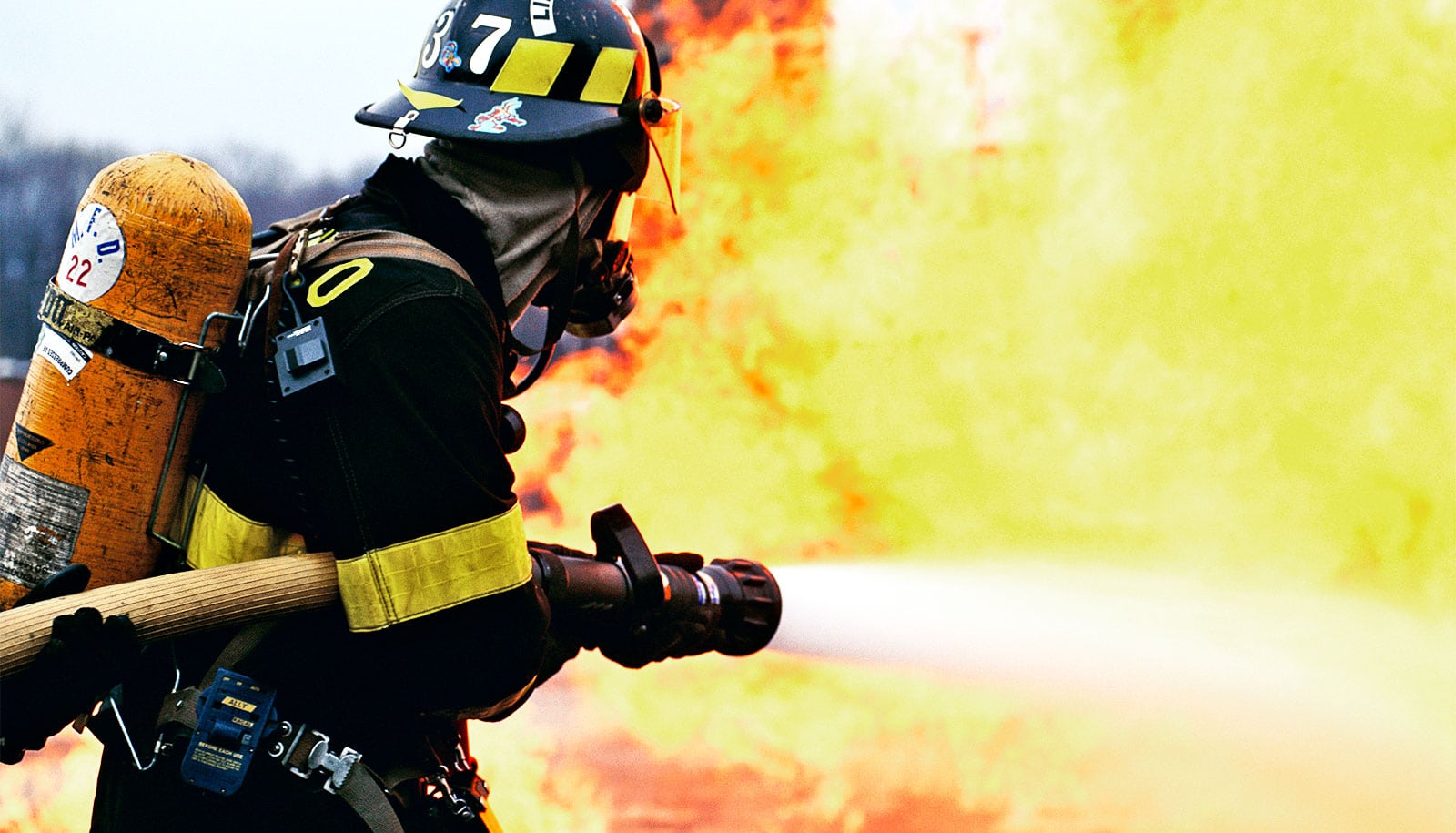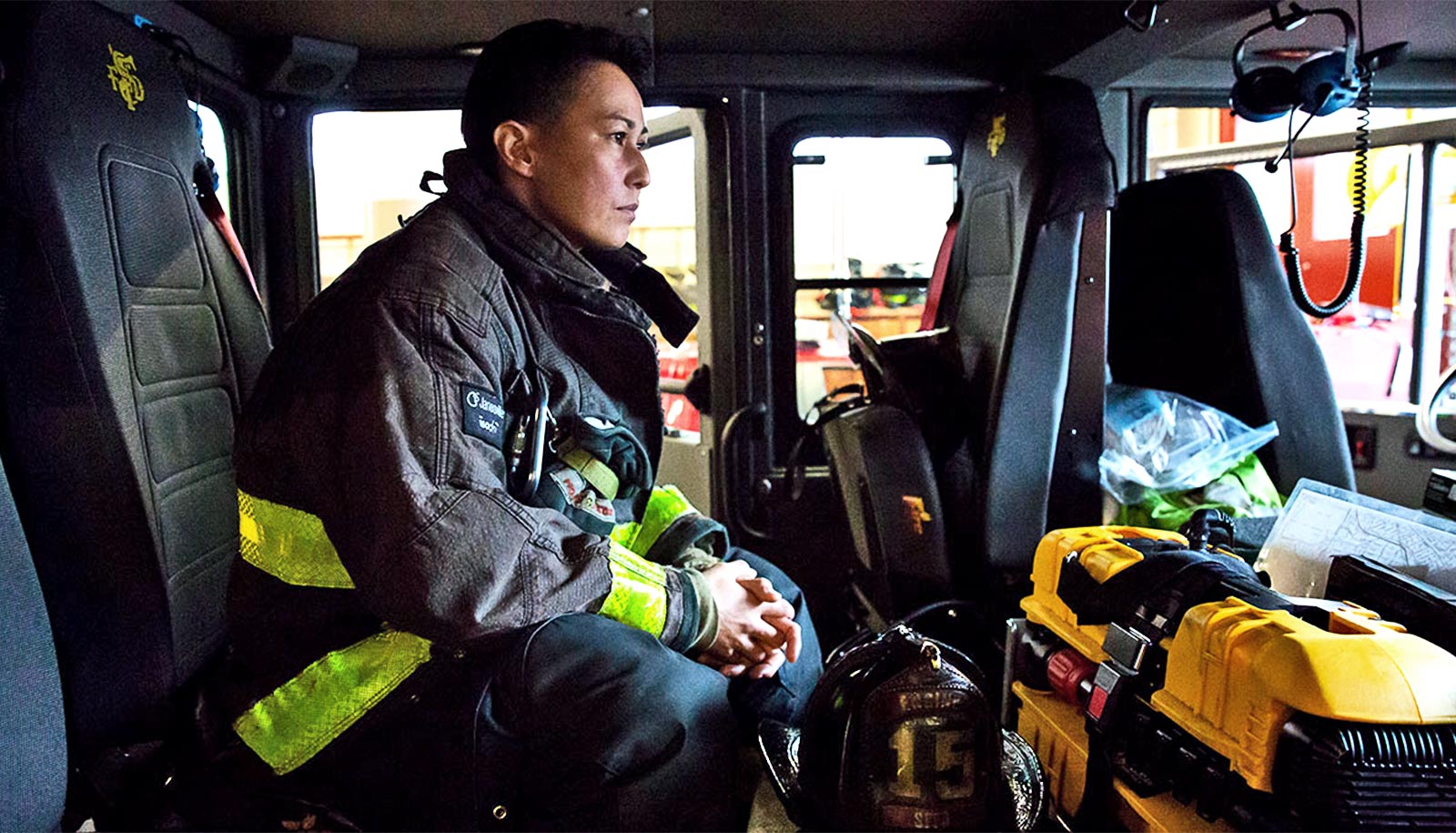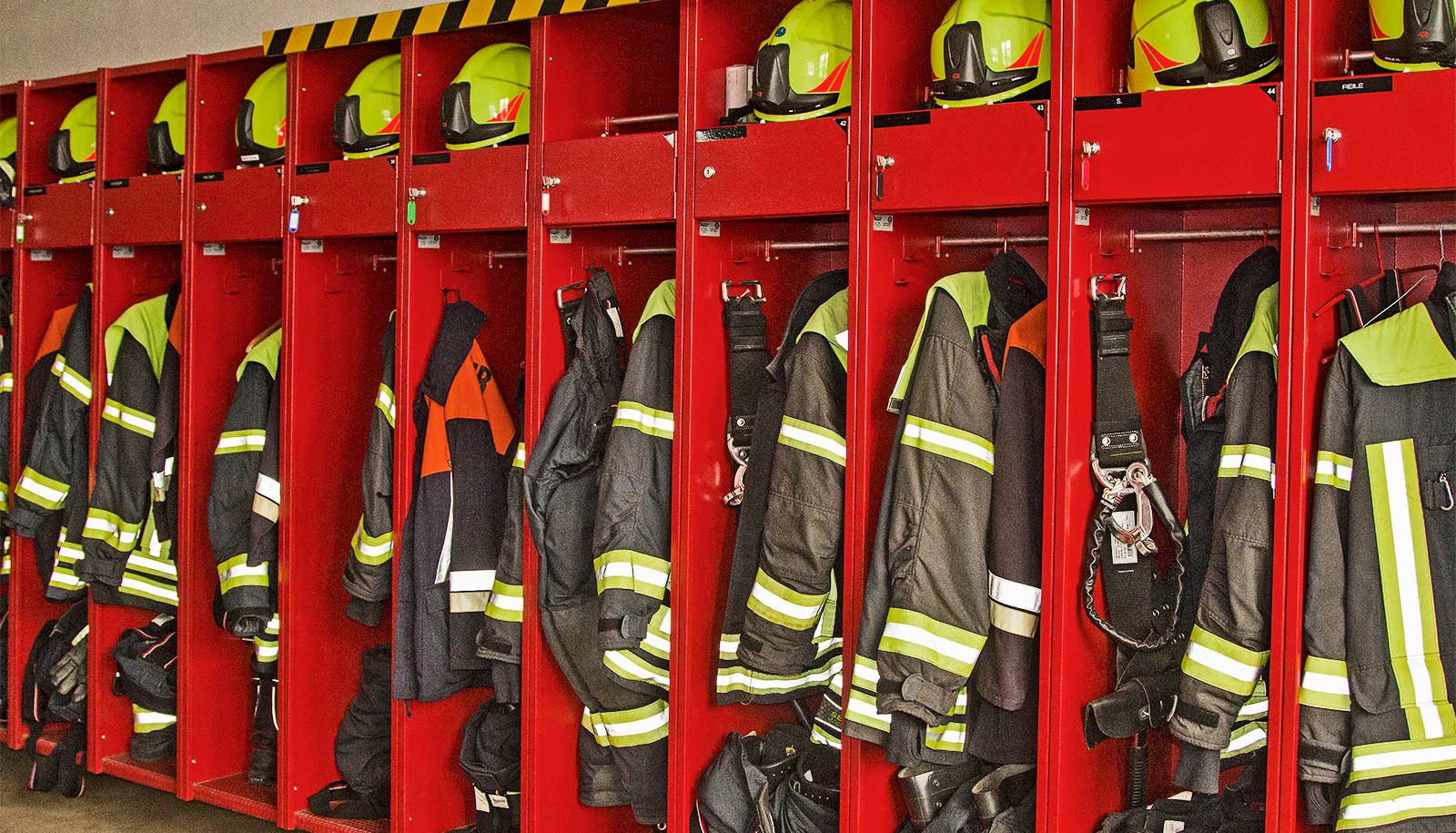Firefighters may have an increased risk of prostate cancer due to on-the-job chemical exposures, according to new research.
Prostate cancer is the leading incident cancer among US males. Firefighters are diagnosed with prostate cancer at a rate 1.21 times higher than the general population, possibly because of chemical exposures including smoke and firefighting foam during firefighting.
Some of those chemicals can affect how genes are expressed through a process called epigenetic modification, and certain epigenetic modifications, including DNA methylation, contribute to cancer development.
Researchers found evidence that experienced firefighters have different epigenetic modifications than new firefighters in regions linked to prostate cancer.
“With these published findings, we have clear evidence of the health risks that firefighters face due to cumulative exposure on the job,” says Jeff Burgess, director of the Center for Firefighter Health Collaborative Research and professor at the University of Arizona Mel and Enid Zuckerman College of Public Health.
The study appears in the journal Environmental and Molecular Mutagenesis.
Burgess, also a member of the BIO5 Institute, has investigated firefighter health for decades. He collaborated with lead author Margaret Quaid and researcher Jackie Goodrich, from the University of Michigan, who led the analysis on the methylation of genes. The team also collaborated with fire service partners and researchers around the country through the Fire Fighter Cancer Cohort Study.
The researchers found that experienced firefighters had different epigenetic modifications at chromosome 8q24—a particular area of the genome where epigenetic modifications have been linked to prostate cancer risk—compared with new firefighters.
One class of chemicals that is linked with epigenetic modifications is per- and polyfluoroalkyl substances, or PFAS, which are used in firefighting foam as well as in many household items, including nonstick pans and water-resistant clothing. The researchers also investigated whether there was a link between exposure to PFAS and epigenetic modification.
The results showed that, in many fire departments, new and experienced firefighters had similar exposure to PFAS. However, exposure to a specific PFAS chemical—branched perfluorooctanoic acid, or PFOA—was linked to epigenetic modifications.
“This study demonstrates the power of the Fire Fighter Cancer Cohort Study to combine data across grants—in this case awards from the Federal Emergency Management Agency in 2014, 2015, and 2018—to more powerfully evaluate questions from the fire service, this time around exposures and increased prostate cancer risk,” Burgess says.
Additional coauthors are from the University of Arizona, the University of Miami, Rutgers University, the National Institute for Occupational Safety and Health at the Centers for Disease Control and Prevention, the Tucson Fire Department, the Los Angeles County Fire Department, the Orange County Fire Authority, and the Fire Protection Research Foundation.
The National Institute of Environmental Health Sciences, a division of the National Institutes of Health; the Federal Emergency Management Agency; and the Centers for Disease Control and Prevention funded the work.
Source: University of Arizona



